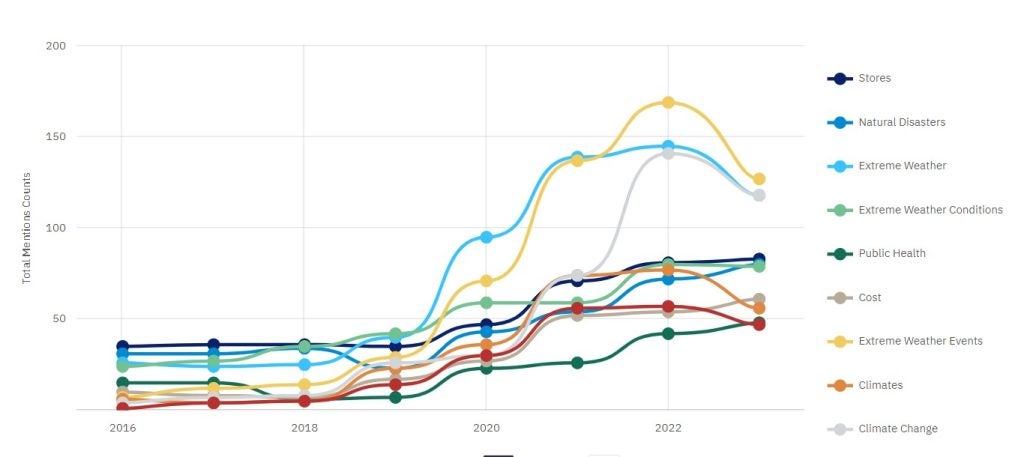
McKinsey & Co’s recent State of Fashion report warned the fashion industry needs to build resilience into its supply chain as climate change makes extreme weather events more frequent. It estimates that extreme weather events could jeopardise $65bn worth of apparel exports by 2030.
The report noted that every part of the fashion value chain is affected by the climate crisis as so much of the industry relies on the regions most impacted by extreme weather.
Extreme weather events threaten an estimated one million jobs across four key countries for apparel – Bangladesh, Cambodia, Pakistan and Vietnam.
Recent years have seen cotton production threatened by excessive rainfall and pest invasion in India, monsoons in Pakistan and drought in Texas.
McKinsey also said that increased temperatures in Dhaka, Bangladesh is contributing to exhaustion and dehydration in factory workers. The report estimated that productivity decreases by 1.5% for every degree that the temperature rises above 25°C.
The summer of 2023 saw Europe’s worst dry spell in 500 years with ships on Europe’s Rhine River being forced to reduce the weight of cargo on board to continue their journeys.

US Tariffs are shifting - will you react or anticipate?
Don’t let policy changes catch you off guard. Stay proactive with real-time data and expert analysis.
By GlobalDataPlus, the Panama Canal Authority introduced water-saving and conservation measures at the start of the 2023 dry season, reducing its capacity to just 32 vessels a day.
Mentions of extreme weather events in apparel company filings

According to GlobalData’s company filings database , extreme weather is being mentioned more often in apparel company filings.
In 2022 ‘extreme weather events’ were mentioned 169 times in apparel company filings, up from just 14 mentions in 2018. The term has been mentioned 127 times in 2023 so far.
Other key terms often mentioned in apparel company filings include “climate change,” which was mentioned 141 times in 2022 and “extreme weather”, which was mentioned 145 times in 2022. Both terms have been mentioned 118 times in 2023 so far.
Natural disasters are also mentioned with increasing frequency with the term getting 80 mentions in apparel company filings in 2023 so far, up from just 34 mentions in 2018.
Navigating an uncertain future climate
To help mitigate the risk, McKinsey’s report advised apparel companies to embed “nimble processes” to offset weather-related pressure on suppliers, inventory and consumers. It warned there might be a trade-off between risk mitigation and cost, speed and capacity as a result.
Prioritising worker health and safety will also need to be a priority for manufacturers going forward. The McKinsey report suggested more frequent breaks, rehydration facilities and proactive temperature monitoring on factory floors, which could include investments in fan systems.
In the longer term, the report said the most important step for the apparel sector in mitigating these risks will be investing in innovation to reduce fashion’s impact on the planet. Possible future innovations ranged from lab-grown fibres to ethical product reuse and recycling and a shift away from the current “make-take-waste” fashion system.
Our signals coverage is powered by GlobalData’s Thematic Engine, which tags millions of data items across six alternative datasets — patents, jobs, deals, company filings, social media mentions and news — to themes, sectors and companies. These signals enhance our predictive capabilities, helping us to identify the most disruptive threats across each of the sectors we cover and the companies best placed to succeed.


